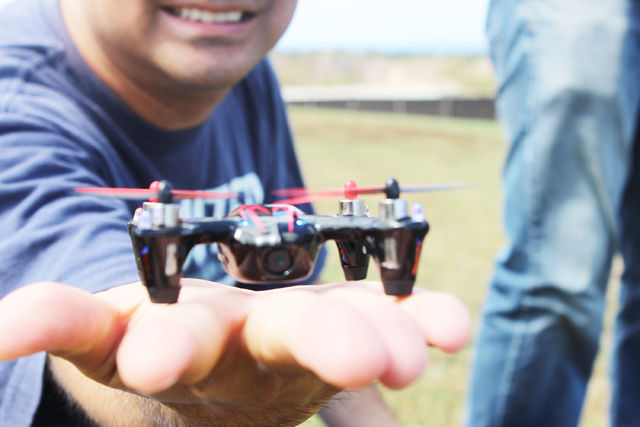LIHUE — Times are changing, and so are classrooms. A new program called THINKit, sponsored by the Maui Economic Development Board Women in Technology, has given students in Kauai High School the opportunity to create and think in different ways
LIHUE — Times are changing, and so are classrooms.
A new program called THINKit, sponsored by the Maui Economic Development Board Women in Technology, has given students in Kauai High School the opportunity to create and think in different ways with the latest technology at their disposal.
“The tools in the THINKit kit, those tools are new and I’m excited because it’s gonna springboard students into more creativity,” said Leah Aiwohi, a STEMworks teacher at Kauai High School for the past 11 years. “Even at the high school level, they’ll have the hands-on experience to work for the future.”
Aiwohi, who has been teaching in public schools for the past 26 years, is a big supporter of the use of new technology in the classroom.
“We’re already in the 21st century. At the rate that things change, including jobs, we currently have and cannot even anticipate for the future. I think programs like this are critical,” Aiwohi said. “It’s not specific to content, but it helps students develop higher developed critical thinking skills for jobs that don’t even exist yet. It’s new and emerging and ever-evolving.”
The new program was launched two weeks ago, according to Aiwohi. In 27 schools across the state, students will have the unique opportunity to use cutting-edge technology.
There are six different areas of learning in the toolkit provided to the teachers: GIS drones, circuits and hardware, prototyping, virtual reality, coding and programming and digital media.
Joanna Kobayashi, a STEMworks teacher at Moanalua High School on Oahu, said kids are excited to use this tool kit, and that it can be an incentive for students to partcipate in the classroom.
“For my classroom, I think it would be good as a hook so that kids can see that when we’re starting to learn a new unit on coding or when we learn a new unit on design, that this is sort of the end product,” Kobayashi said. “My students want to know what we’re gonna use (the tools) for and how it’s already being used. I think giving them that hands-on kit can help them imagine what it would be like after they learn how to use it.”
Creativity and applying critical thinking skills are what the program aims for, and Aiwohi sees only good things from it for her students and the state.
“The way that they’re gonna be using these tools, I anticipate that they’re going to spark some new ideas and projects,” Aiwohi said. “I think this is a missing component, that is going to fill a gap because at least it’ll give students, even at the high school level, an opportunity for hands-on experimenting and exploring before we jump into talking about issues, topics and software. … It’ll allow them to free up their minds to be more creative.”


